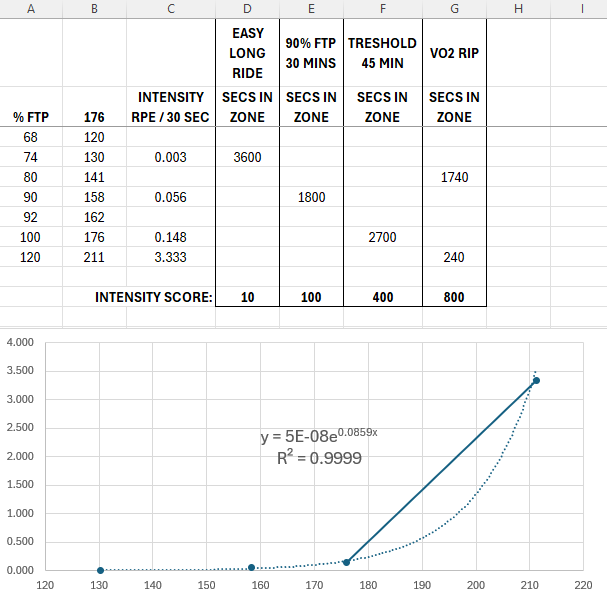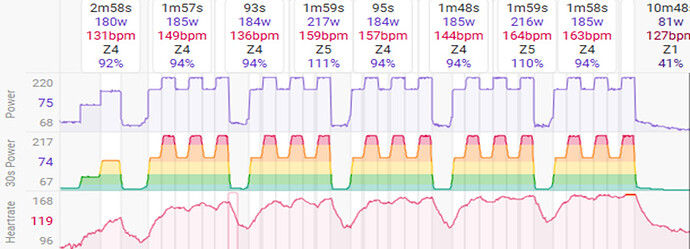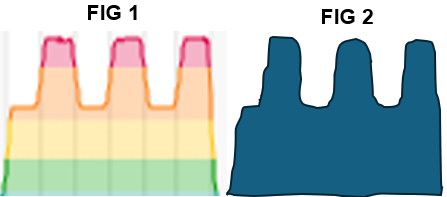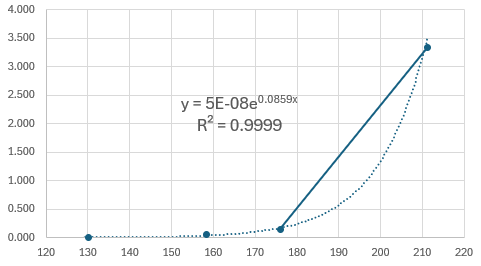Coggan’s early paper describing FTP :
Thank you for reference. Now I understand exactly where Coggain messed up:
He tried to imitate TRIMP formula in the form:
TRIMPS = exercise duration x average HR x a HR-dependent intensity weighting factor
but that only works for linear transformation, it doesn’t work for not linear one.
That’s why general formula for more advanced TRIMP versions is:
TRIMPexp = sum(D x HRr x 0.64ey)
(see reference: TRIMP - Fellrnr.com, Running tips)
This the same as area under the curve.
With this in mind and to keep Coggan’s idea the correct math is:
0)Express power function as fraction of FTP
1)Calculate 30seconds running average (like Coggan mentioned)
2)Apply transformation to that function (raise values to 4th power)
3)Take area under the curve
This produces very similar function to the one I quickly engineered above (at least in interesting domain). Now when I understand the idea behind the original TSS I should edit it to just use 4th power on power expressed as % of FTP. This would keep original Coggan’s idea (but again, it would produce very similar values to my function).
You can see how it works with TRIMPS:
TRIMPexp = sum(D x HRr x 0.64ey)
Adding any duration of “work” at baseline HR doesn’t change the end result.
Which takes us back to what is load and what is it not? How do you compare the stress of these two different things? If we are trying to manage progressive overload.
It’s clear not all load is equal in terms of the stress induced, and recovery necessary. Your bit above doesn’t address it. That’s the elephant in the room.
The elephant in the room is that Coggan applied incorrect math and messed up units in his function. It’s clear reading his original text. He just made a math mistake.
Apply correct math described above and all the problems with TSS increasing when inserting 0W intervals in the middle of the ride disappear along with other issues like over weighing easy rides.
It’s still not ideal but it’s a significant improvement over TSS.
Another way to think about it:
Imagine you have continuous lactate monitor which gives you a perfect lactate curve during exercise. You want to calculate training load. What would you do? You would take area under the lactate curve. That was the whole idea behind more advanced versions of TRIMPS and the whole idea behind Coggan’s observation about power^4 corresponding to lactate levels.
Coggan observed that you can raise power values (as % of FTP) to 4th power to get a function that corresponds to lactate levels. Now you can answer two questions:
1)What is the constant power that produces the same lactate response that the workout you just analyzed?
2)What is the training load of that workout?
To answer question number 1 you take the average and then 4th root (as lactate levels are proportional to power^4). This is why NP formula has 4th root in it.
To answer question number 2) you just take area under the lactate curve.
Coggan somehow forgot to take step back from his NP idea to get back to his original idea that lactate levels correspond to physiological processes.
Again, I am not inserting any new observations about physiologically here. I am just taking the original Coggan’s idea and correct his elementary math mistake.
![]()




